I thought there are many people will meet this situation, the one who send us inquiries always asking to send them datasheet, so, what exactly does a patch cord data sheet include? Why is a data sheet necessary?
A patch cord data sheet primarily includes basic product information, product images, technical specifications, and packaging information which is a reference for customers to verify whether the fiber optic patch cords are qualified when they receive the goods. Below, we’ll carefully analyze the specifications of a fiber optic patch cord from various perspectives.
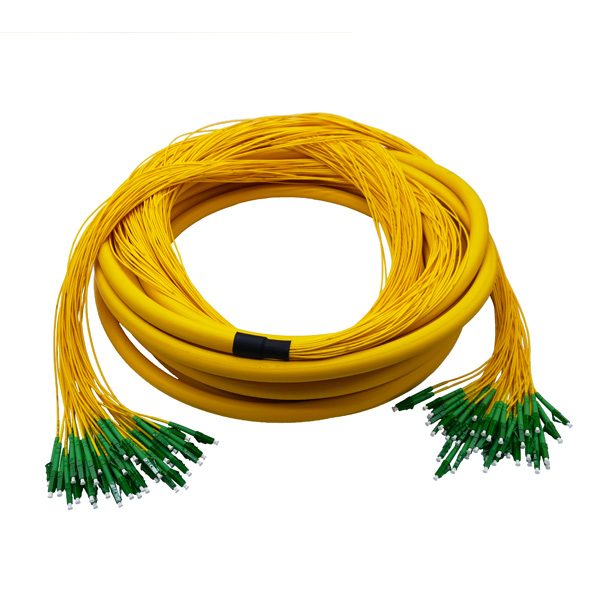
Taking the Multi Cores Fiber Optic Patch Cord 48 Cores SM G.652d PVC, Breakout Cable 2.0mm 30cm With LC/APC Connectors, Yellow as an example, its basic technical parameters are shown in the following table:
| Connector | LC/APC-LC/APC |
| Operating wavelength | 1260-1650nm |
| Fiber type | G.652D |
| Cable jacket | PVC |
| Cable type | 48 cores |
| Polish manner | APC (8°) |
| Cable color | Yellow |
| Bend radius of fiber | ≥30mm (G.652D) |
| Insertion Loss | ≤ 0.1dB (Master)≤ 0.3dB (Standard)Tested by JDS RM 3750 |
| Return loss | APC≥60 dB |
| Repeatability | ≤0.1dB |
| Durability | ≤0.1dB typical change, 500 matings |
| Interchangeability | ≤0.2dB |
| Working temperature | -40 ~+75℃ |
| Storage temperature | -40 ~+85℃ |
As can be seen from the table above, fiber optic patch cords’ specifications primarily focus on three aspects: basic structure, performance parameters, and operating environment.
Basic Fiber Optic Patch Cord Cable Structure
The basic structure of a fiber optic patch cable primarily includes connector type and polishing method, wavelength range, fiber type and number of fibers, cable sheath material, outer diameter, and color. Fiber optic patch cables are compatible with all wavelengths, so when purchasing, we typically focus on the connector and cable details.
Fiber Optic Cable Single Mode
Fiber mode:
Fiber patch cables can use either single-mode or multimode fiber. The main difference between them lies in the core diameter of the inner light-transmitting portion of the bare fiber (250µm). Single-mode fiber has a core diameter of 9/125µm, which is much smaller than multimode fiber 50/125um or 62.5/125um. Common wavelengths for single mode fiber are 1310nm or 1550nm, while multimode fiber typically operates at 850nm or 1300nm.
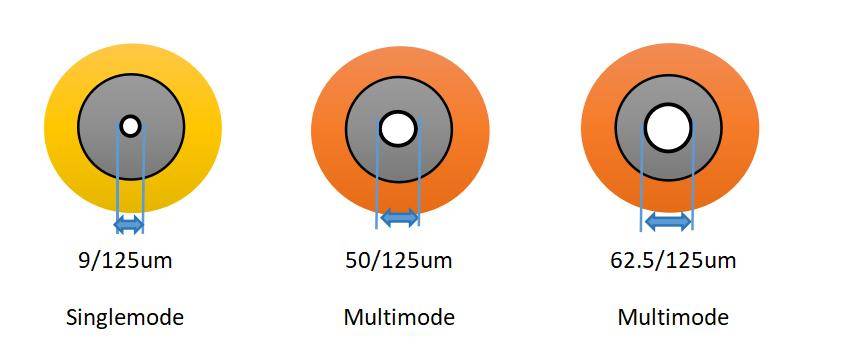
Fiber Type:
Fiber types are categorized based on their characteristics. Common single-mode fiber types include G.652D, G.657A1, G.657A2, and G.657B3. Multimode fiber types are G.651, which are further categorized as OM1, OM2, OM3, OM4, and OM5.
To visually distinguish single-mode from multimode fiber, single-mode fiber optic cables are typically coated in yellow, but can also be made in white, blue, gray, black, or other colors. Multimode fiber optic cables are coated in orange for OM1/OM2, aqua for OM3, purple for OM4, and lime green for OM5. Custom cable colors are available, request a quote.
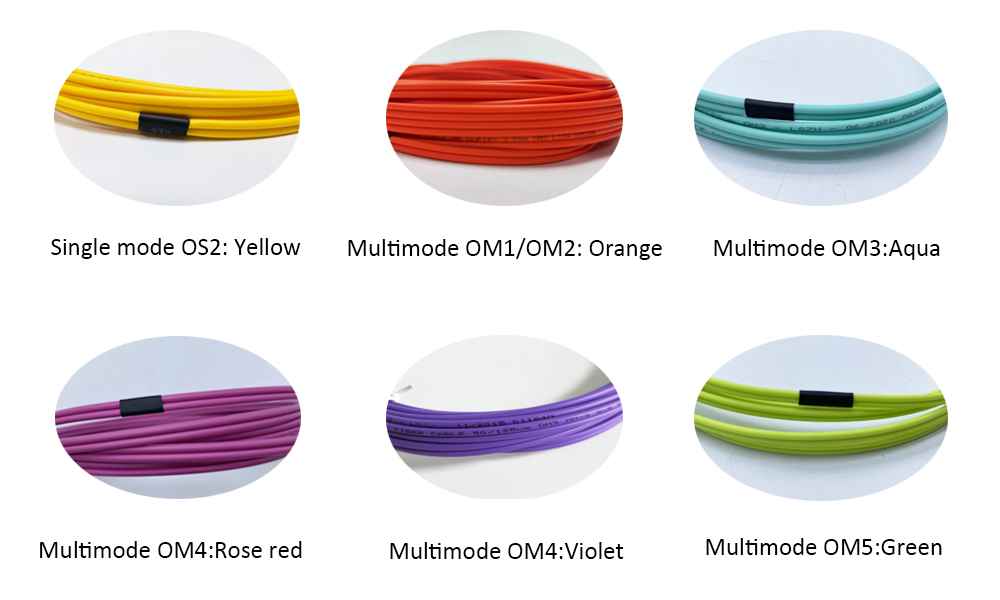
Optical Cable Structure:
Optical cables are available in a variety of custom structures, depending on the internal reinforcement core, the number of fibers, and specific installation requirements. Common sizes include 0.9mm, 2mm, 3mm, and 5mm. Also available are drop cables, figure 8 cables, bundled cables, and ribbon cables, etc. The cable sheath can be LSZH, PVC, TPU, PE and so on.
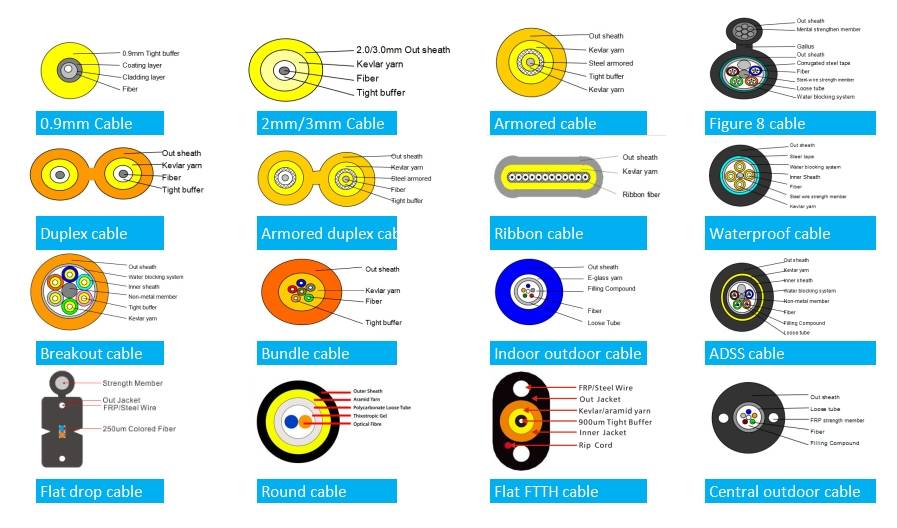
From above table, thought there is no single mode mark, but it use G.652D fiber, which is one of single mode fiber, so it is single mode fiber optic patch cord cable.
Fiber Optic Connector LC/APC
Connector descriptions are generally divided into two sections, separated by a “/”.
Before “/” indicates the connector type, after “/” indicates the end-face polish type.
- LC is a type of fiber optic connector, Yingda offers a variety of connector styles, including SC, FC, ST, E2000, MPO, MTP, MU, MTRJ, D, 4 LX5, and can be customized.
- APC is one of the ways to grind the ceramic ferrule inside the connector after inserting the bare fiber. Commonly used grinding methods include UPC, APC, and PC.
Fiber optic connectors are also color-coded to match the type of fiber optic cable and optical fiber. Single-mode connectors are UPC blue, APC green, multimode OM1 and OM2 beige, OM3 aqua, OM4 purple/rose/aqua, and OM5 lemon green/beige/aqua. The connector boot can be customized.
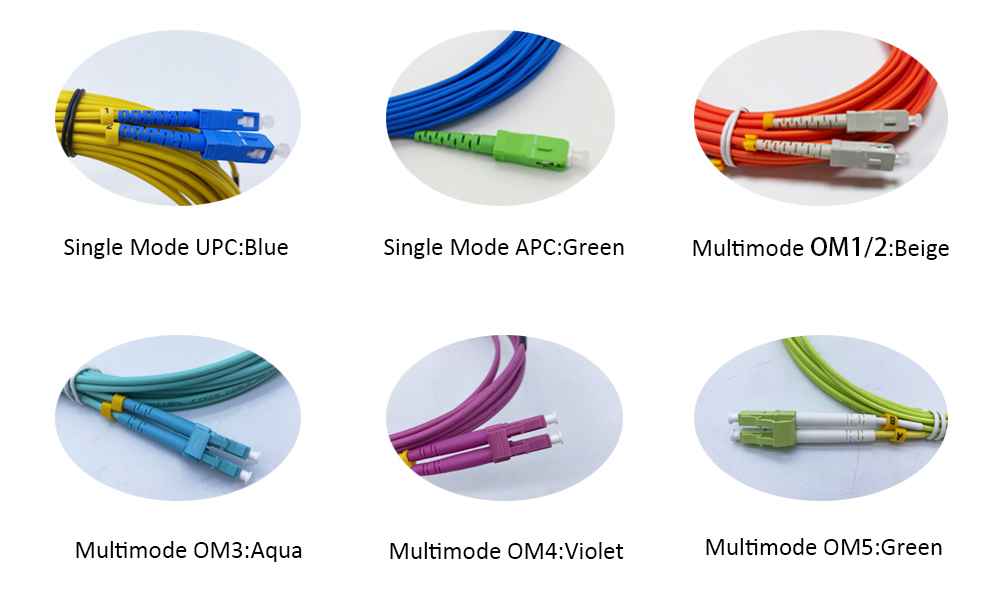
Fiber Patch Cord Lengths
The fiber patch cord length is determined by the distance between the two connected devices. During construction, it is recommended to reserve 10% redundant length to avoid pulling damage. Commonly used fiber optic patch cords are patch cord 0.5 m, patch cord 1m, patch cord 1.5 m, patch cord 2 meter, patch cord 3 mtr, patch cord 5m, fiber patch cord 10 meter, patch cord 15m, patch cord 20m, patch cord 30m, etc
Fiber Optic Patch Cord Technical Datas
The optical performance of fiber optic patch cord cables is primarily reflected in insertion loss and back reflection, repeatability, variability, and durability. For most standard patch cables. Yingda performs 100% insertion loss testing to better guarantee link attenuation and stable signal transmission. If the customer requires precision, we will further perform 3D interferometry testing on the fiber endface.
Insertion Loss and Back Reflection
Fiber optic patch cord cables generally meet international standards for insertion loss <0.3dB, typically <0.2dB. Return loss APC ≥60dB, UPC ≥50dB, and PC ≥30dB. Factory testing within these ranges is considered acceptable.
All losses remain within 0.1dB under repeated insertion and removal, ensuring durability of over 500 cycles. Interchangeability loss is also less than 0.2dB.
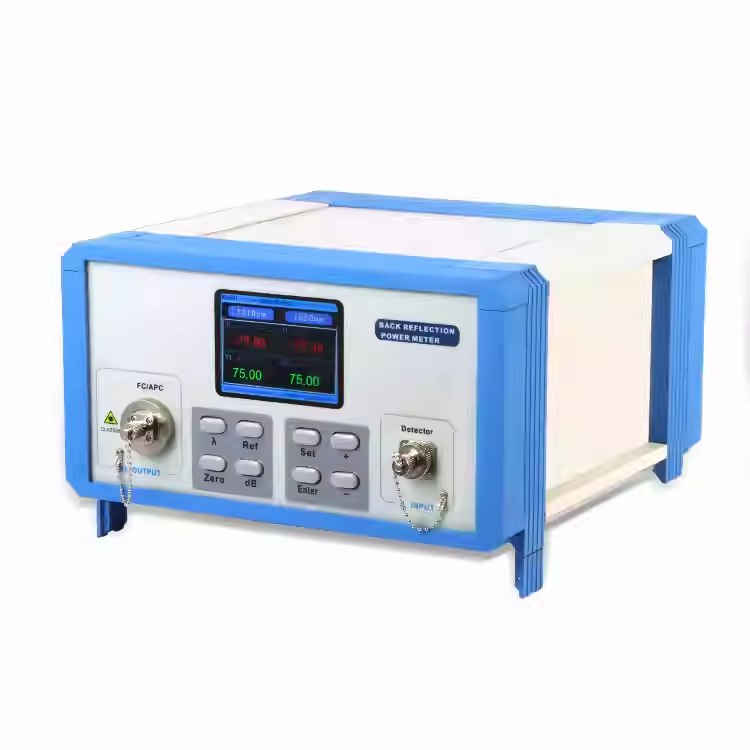
Endface Geometry
For customers with strict quality requirements, we strongly recommend that they perform 3D end face inspection, which mainly tests these three aspects. As long as they are within this range, they are considered qualified.
- Curvature Radius: 10–25mm (7.69mm deviation is common in actual measurements).
- Vertex Offset: ≤ 50um (offset exceeding 14.45um affects alignment accuracy).
- Fiber Height: ≤ 50nm (excessive height may result in physical damage or air gaps).
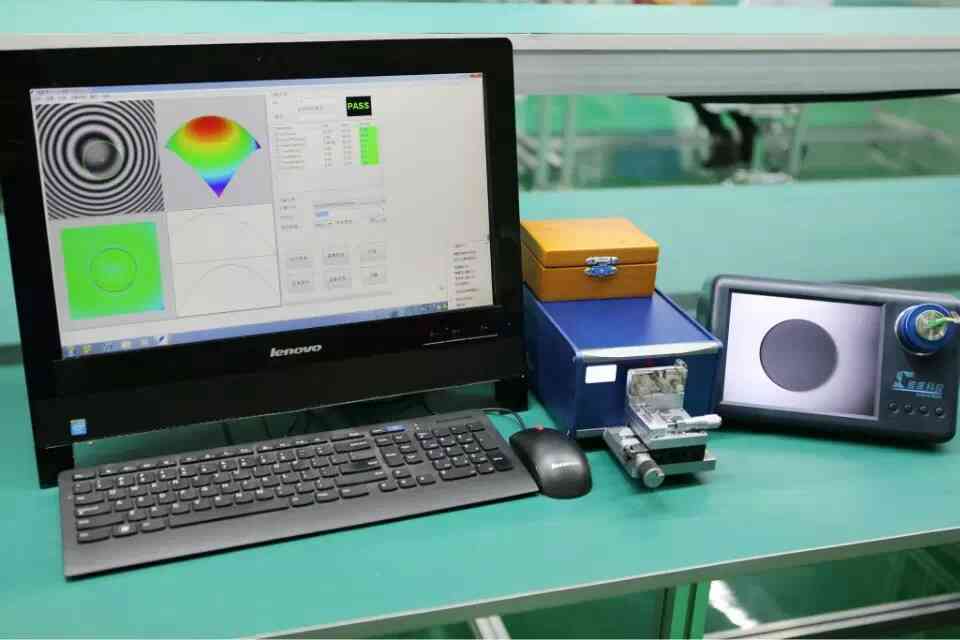
Fiber Optic Patch Cord Environmental Adaptability
The recommended operating temperature for fiber optic patch cords is 0°C-60°C, with a relative humidity of ≤85%. High temperatures accelerate sheath aging, and excessive humidity may cause oxidation of connectors.
- Waterproofing and dust-proof are also crucial, especially for outdoor use, waterproof patch cables (e.g., IP65/P65 rated) should be used, and the connectors should be sealed.
- For indoor deployment FTTH, FTTB, FTTP, the environment should be kept clean to prevent dust from contaminating the fiber end faces.
All Yingda fiber optic patch cords undergo rigorous high and low temperature testing and can be used and stored in the following temperatures. Poor operating conditions may reduce the transmission distance of single-mode patch cables from 40km to less than 10km. For multi-mode patch cables, the transmission distance must be strictly controlled within 500m at an 850nm wavelength.
- Temperature Cycling: Additional attenuation ≤ 0.2dB/km in an environment from -40°C to +80°C.
- High Low-Temperature Stability: Attenuation change ≤ 0.05dB/km after 72 hours of cycling from -10°C to +45°C.
Fiber Optic Patch Cord Pack Types
Fiber optic patch cords are very fragile and easily contaminated by dust. Therefore, we generally take dust-proof measures before shipping.
- Each connector must be equipped with a dust cap throughout the production process.
- The final wrapping of the patch cable is based on the fiber’s bend radius. For example, a G652D fiber optic patch cable is generally wrapped twice per meter to ensure the bend radius is within a reasonable range.
Yingda fiber optic patch cables are individually packaged in bags and labeled with neutral in English or custom labels before being packed and shipped.
If the patch cable is too large in diameter or too long, we generally recommend wrapping it in plastic film or wrapping it around a cable reel before packed.

Conclusion
The specifications of fiber optic patch cords mainly include the above contents. If you have other special requirements, please contact our sales representatives in time to obtain a more flexible and cost-effective quotation.
Read More:
Optical Fiber End Face Grinding Polishing Method PC UPC APC




